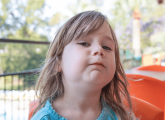A trip to the woods promises limitless learning opportunities, but it also requires careful management, explains Sue Cowley…
Recently, i came across the shocking statistic that three-quarters of children now spend less time outside than prison inmates do. Clearly, there is a need for us to reconnect children with the natural world and to get them physically active in the great outdoors. There are so many benefits to be gained from playing and learning outside – from finding out about the environment and building gross motor skills, to creating a sense of calm and getting a dose of vitamin D. Recently, there has been an explosion of interest in outdoor learning. Early years settings are blazing a trail, and this comes with both opportunities and challenges.
You have set up an ‘outdoor learning day’ in your setting, once a week, when the children spend the whole day outside in a wooded area. You are currently experiencing a few teething problems, particularly around getting the children ready, and also some risky behaviour that is worrying you when they are outdoors.
One of the best things about outdoor learning is the way it builds independent skills and resilience. You don’t need to wait to get outside to build independence, though; you can start before you even leave the building.
Encourage and support your children to put on their outdoor clothes by themselves, to change into their boots, and so on. Leave plenty of time for this so you don’t feel rushed, and remember to leave even more time to get changed back at the end of the day when the children will be tired and muddy.
If you are going to offer outdoor provision, I recommend investing in some training. As well as finding out more about outdoor learning, this will help you consider things like the best resources to buy, how to do risk assessments, and also managing behaviour in outdoor environments. (Our setting leader did the Level 3 Practitioner Award at forestschools.com.)
1. Consider the specific risks in your outdoor space. You will need to check for hazards such as dog faeces and poisonous plants. Forest school training will help you understand how to risk assess your space properly.
2. Don’t be too worried about minor hazards, such as stinging nettles – the experience of being stung is very educative as to plant identification! However, you must be aware of children with allergies, for instance, to bee or wasp stings. Take a full medical kit with you when you head out.
3. Make sure your insurance covers you for outdoor learning sessions and the activities you plan to do.
One of the key aspects of outdoor learning is balancing levels of risk with keeping the children safe. There are lots of lessons to be learned from being outside – both social and emotional ones, and also about the natural world. To ensure best behaviour…
● Talk to the children before you go outside to set the ‘ground rules’, as well as reinforcing these once you are outdoors. Don’t assume that, because you said something once, the children will have understood and retained it.
● If your outdoor area is away from your setting, talk about the behaviours you will need to see en route: walking in pairs, staying together, looking out for traffic, listening carefully to what the practitioners say. Explain why these things are important.
● Talk to the children about the specific behaviours you will need to see for different outdoor situations, for instance, how to carry a stick safely and how to behave around fire.
● Consider having some kind of aural signal to get the children’s attention (e,.g. a bell) as it is harder to make your voice travel outside.
● Create a central ‘meeting point’ where you can all gather, for instance, to make drinks or to cook over a fire. Reinforce behaviour expectations during these group times.
● Use nature as a motivation for calm, quiet and focused behaviour – the children will need to stay still if they want to observe birds and other wildlife in the natural environment.
Sue Cowley is an educational author and helps to run an ‘outstanding’ preschool. Visit suecowley.co.uk or follow @Sue_Cowley

Bad behaviour – How to decelerate it in Early Years
Editors picks

Defiant behaviour – How to respond in Early Years
Editors picks
